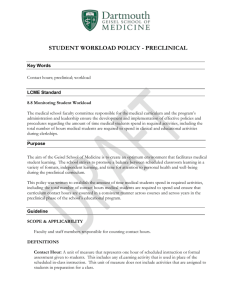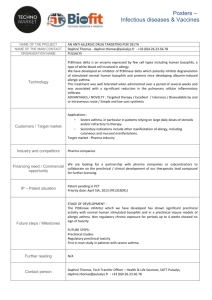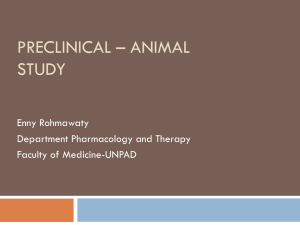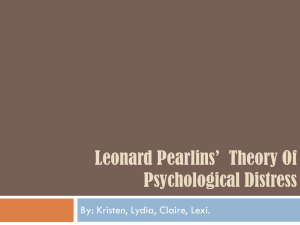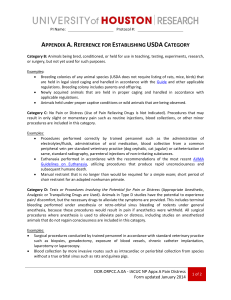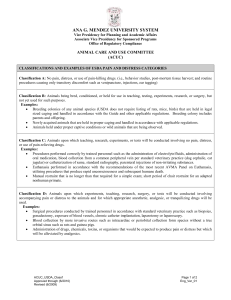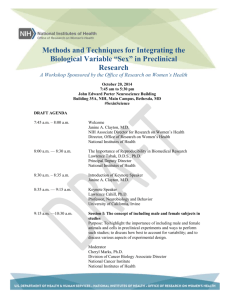Instructions to Authors - Open Innovation
advertisement
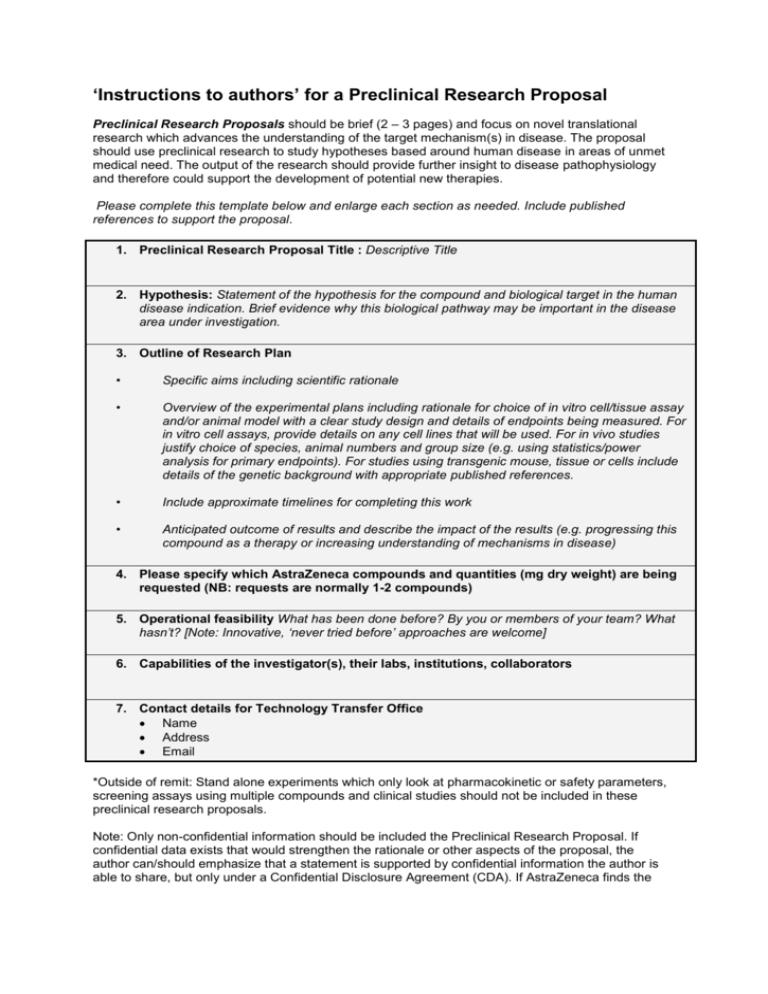
‘Instructions to authors’ for a Preclinical Research Proposal Preclinical Research Proposals should be brief (2 – 3 pages) and focus on novel translational research which advances the understanding of the target mechanism(s) in disease. The proposal should use preclinical research to study hypotheses based around human disease in areas of unmet medical need. The output of the research should provide further insight to disease pathophysiology and therefore could support the development of potential new therapies. Please complete this template below and enlarge each section as needed. Include published references to support the proposal. 1. Preclinical Research Proposal Title : Descriptive Title 2. Hypothesis: Statement of the hypothesis for the compound and biological target in the human disease indication. Brief evidence why this biological pathway may be important in the disease area under investigation. 3. Outline of Research Plan • Specific aims including scientific rationale • Overview of the experimental plans including rationale for choice of in vitro cell/tissue assay and/or animal model with a clear study design and details of endpoints being measured. For in vitro cell assays, provide details on any cell lines that will be used. For in vivo studies justify choice of species, animal numbers and group size (e.g. using statistics/power analysis for primary endpoints). For studies using transgenic mouse, tissue or cells include details of the genetic background with appropriate published references. • Include approximate timelines for completing this work • Anticipated outcome of results and describe the impact of the results (e.g. progressing this compound as a therapy or increasing understanding of mechanisms in disease) 4. Please specify which AstraZeneca compounds and quantities (mg dry weight) are being requested (NB: requests are normally 1-2 compounds) 5. Operational feasibility What has been done before? By you or members of your team? What hasn’t? [Note: Innovative, ‘never tried before’ approaches are welcome] 6. Capabilities of the investigator(s), their labs, institutions, collaborators 7. Contact details for Technology Transfer Office Name Address Email *Outside of remit: Stand alone experiments which only look at pharmacokinetic or safety parameters, screening assays using multiple compounds and clinical studies should not be included in these preclinical research proposals. Note: Only non-confidential information should be included the Preclinical Research Proposal. If confidential data exists that would strengthen the rationale or other aspects of the proposal, the author can/should emphasize that a statement is supported by confidential information the author is able to share, but only under a Confidential Disclosure Agreement (CDA). If AstraZeneca finds the non-confidential Concept Proposal sufficiently intriguing, execution of a CDA so that information can be considered will be discussed. We request that you supply in your application the name and contact details of your Technology Transfer Office person. Preferably this is the individual whom you have already discussed your submission with. Upon acceptance of your proposal, the contract can then be sent directly to this individual as well as to the submitter. During the submission process, additional details regarding the use of human tissue and/or animals will be requested as with respect to the proposal. 8. Animal Use Risk Assessment for non-AZ funded external animal studies: please complete if your research proposal includes the use of animals. Put a check (X) in each category that most accurately represents the animal model in the proposal. Species ___ Invertebrates, fish, birds, fetal/larval forms, reptiles ___ Mice, rats, hamsters ___ Guinea pigs, rabbits, ferrets, mini pigs, genetically altered animals, other species ___ Farm animals, equines, dogs, cats, harmful mutants, surgically prepared animals (any species) ___ Non human primates (NHPs) Sensitivity ___ Ex vivo studies, terminal studies, or studies on conscious animals with appropriate mitigation of pain/distress, but do not involve any of the criteria in sensitivity selections below ___ Studies use not humanely established or unconventional methods of euthanasia ___ Models involve: major surgery and/or repeated surgery, prolonged restraint, juvenile or neonatal animals ___ Models of: public concern, smoking, brain surgery/instrumentation, drug dependency in NHPs, unalleviated pain, or with death required as an endpoint Potential for pain and distress ___ Ex vivo or terminal studies ___ Studies involve: no more than minor or transient discomfort or stress (routine dosing/sampling) or which have the potential to cause prolonged pain or distress, but the use of anesthetics/analgesics provides appropriate mitigation ___ Studies involve: some pain or distress but with appropriate mitigation (most toxicity tests, surgery) or the potential to cause high degrees of pain or distress, but procedures are terminated before pain or distress occurs ___ Studies involve potential for significant pain or distress which cannot be alleviated, but are scientifically justified, (acute tox studies with significant morbidity or death as an endpoint, pain models) Degree of Engagement ___ AZ and the external facility have had previous agreements over the last 5 years ___AZ and the external facility have had no previous agreements in the last 5 years Name and Location* of external facility: ___________________________________________________________________________ Reputation of Facility ___ Facility has external regulatory oversight and AAALAC accreditation or equivalent , no history of security /media issues in last 3 yrs ___ Facility has no external regulatory oversight and has AAALAC accreditation, no history of security /media issues in last 3 yrs ___ Facility has no external regulatory oversight, no AAALAC accreditation, no history of security /media issues in last 3 yrs ___ Facility has no external regulatory oversight, no AAALAC accreditation and/or has a history of security / media issues in last 3 yrs .

